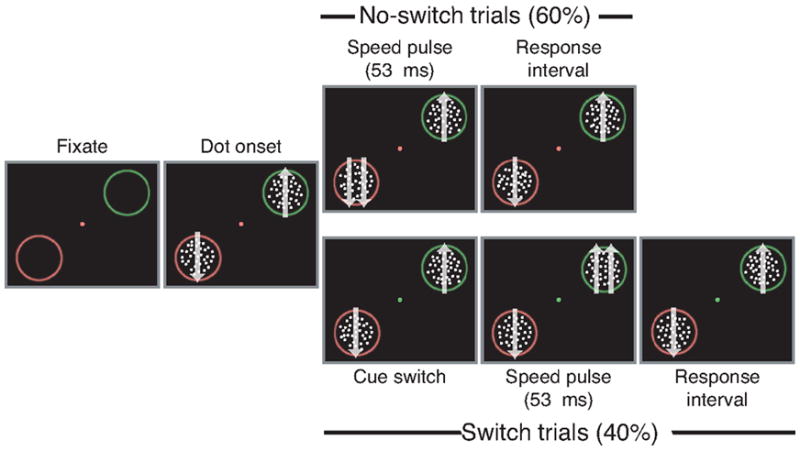Figure 1.

Attention-switch task design. Trials began with the appearance of a fixation point and two peripheral annuli. After fixation, 100% coherent moving dots appeared within the annuli. The monkey released a touch bar to indicate detection of a 53-ms-duration (4 video frames) speed increase at either dot patch. Matching fixation point and annulus color indicated the likely location of the speed pulse (85% valid cues). On 40% of trials, the fixation-point color switched midtrial, indicating that the likely speed-pulse location had switched. After a 400 ms fixed delay, speed-pulse times and cue-switch times were chosen form an exponential distribution (mean of 1 s).
